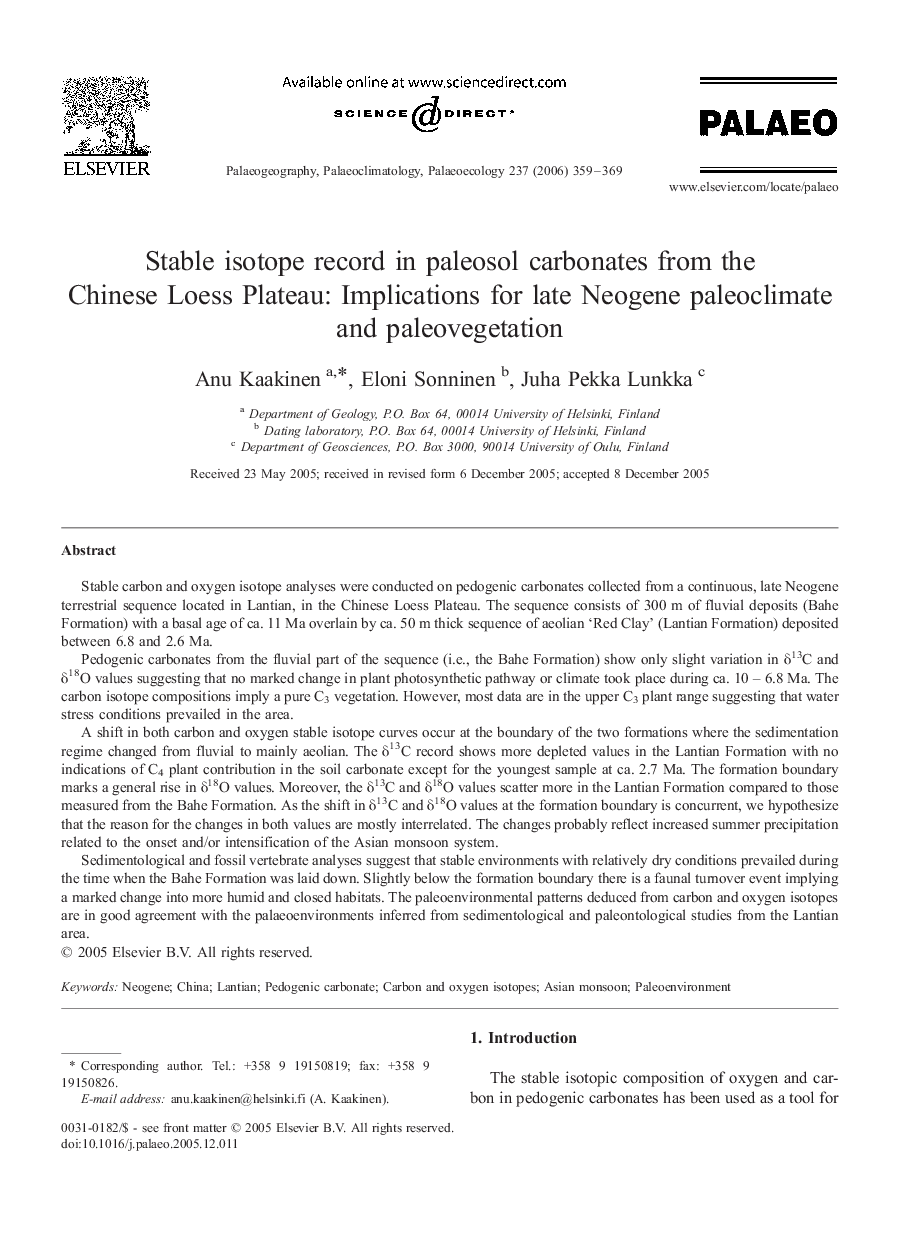| کد مقاله | کد نشریه | سال انتشار | مقاله انگلیسی | نسخه تمام متن |
|---|---|---|---|---|
| 4469418 | 1622370 | 2006 | 11 صفحه PDF | دانلود رایگان |

Stable carbon and oxygen isotope analyses were conducted on pedogenic carbonates collected from a continuous, late Neogene terrestrial sequence located in Lantian, in the Chinese Loess Plateau. The sequence consists of 300 m of fluvial deposits (Bahe Formation) with a basal age of ca. 11 Ma overlain by ca. 50 m thick sequence of aeolian ‘Red Clay’ (Lantian Formation) deposited between 6.8 and 2.6 Ma.Pedogenic carbonates from the fluvial part of the sequence (i.e., the Bahe Formation) show only slight variation in δ13C and δ18O values suggesting that no marked change in plant photosynthetic pathway or climate took place during ca. 10–6.8 Ma. The carbon isotope compositions imply a pure C3 vegetation. However, most data are in the upper C3 plant range suggesting that water stress conditions prevailed in the area.A shift in both carbon and oxygen stable isotope curves occur at the boundary of the two formations where the sedimentation regime changed from fluvial to mainly aeolian. The δ13C record shows more depleted values in the Lantian Formation with no indications of C4 plant contribution in the soil carbonate except for the youngest sample at ca. 2.7 Ma. The formation boundary marks a general rise in δ18O values. Moreover, the δ13C and δ18O values scatter more in the Lantian Formation compared to those measured from the Bahe Formation. As the shift in δ13C and δ18O values at the formation boundary is concurrent, we hypothesize that the reason for the changes in both values are mostly interrelated. The changes probably reflect increased summer precipitation related to the onset and/or intensification of the Asian monsoon system.Sedimentological and fossil vertebrate analyses suggest that stable environments with relatively dry conditions prevailed during the time when the Bahe Formation was laid down. Slightly below the formation boundary there is a faunal turnover event implying a marked change into more humid and closed habitats. The paleoenvironmental patterns deduced from carbon and oxygen isotopes are in good agreement with the palaeoenvironments inferred from sedimentological and paleontological studies from the Lantian area.
Journal: Palaeogeography, Palaeoclimatology, Palaeoecology - Volume 237, Issues 2–4, 4 August 2006, Pages 359–369